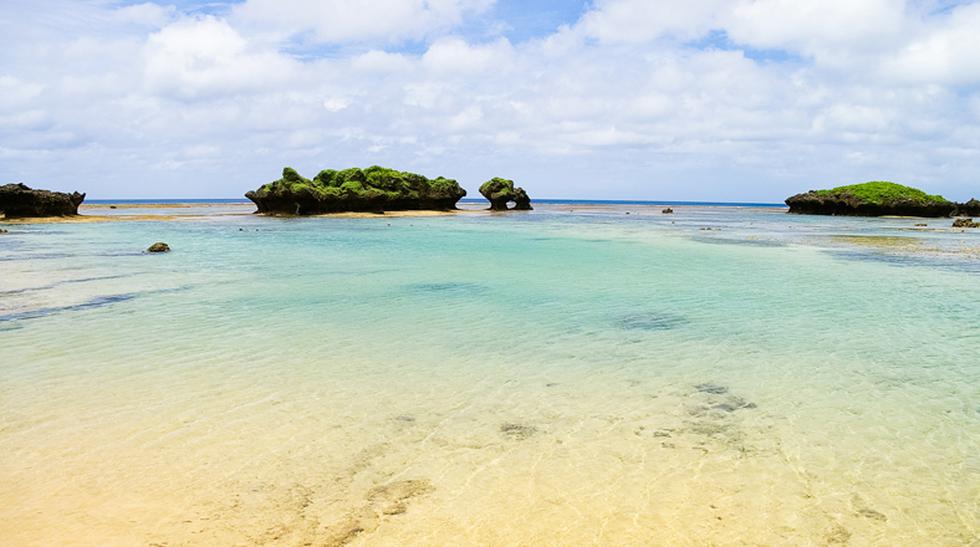
Let’s imagine a scene: a person walks along the shore of a beach in southern Japan and, bending down to pick up a handful of sand, discovers that each grain is the perfect shape of a tiny star. This phenomenon, which seems like something out of a dream, is actually an amazing reality on the beaches of the islands of Iriomote, Hatoma and Taketomi, in the prefecture of Okinawa, Japan. Known as the “Star Sand”, this natural curiosity hides a fascinating history.
The sand that comes from the sea
Far from being simple sand, each tiny stellate grain is actually the exoskeleton of single-celled organisms known as foraminifera, particularly the species Baculogypsina sphaerulata. These marine protists form complex calcareous structures that, once dead, are carried by ocean currents to the shore, creating the illusion that the beaches are covered in stars.
The interesting thing about these organisms is that, during their life, they house small photosynthetic cells called diatoms. These diatoms, through the process of photosynthesis, produce carbohydrates and oxygen that benefit the foraminifera, forming a small ecosystem within each stellate grain. When the foraminifera die, their starry skeleton remains as a witness to that marine life, adorning the beaches with its peculiar shape.
A starry landscape in Japan
Star sand is not found on any beach in Japan. The islands of Iriomote, Hatoma and Taketomi, located in the Okinawa archipelago, are the main destinations where you can find these small natural stars. In particular, Kaiji Beach in Taketomi has become an iconic location, attracting tourists fascinated by the beauty and uniqueness of the phenomenon.
Once the foraminifera die, their skeletons are transported by ocean currents to the coast. During this journey, the spines on their exoskeletons may become slightly rounded, but retain the star-shaped shape that makes them so unique. Over time, the remains mix with other shell and rock fragments, creating an environment that seems straight out of a fairy tale.
The legacy of stars in Japanese culture: myths and legends
Beyond its surprising natural origin, star sand has given rise to many local legends and myths. In Japanese tradition, grains of sand are said to be the skeletons of the offspring of the northern and southern stars. According to legend, these baby stars would have been killed by a large sea serpent, and their remains were scattered along the coasts of the Okinawa islands.
This narrative adds a touch of magic to the experience of finding these small fossils on the beach. For visitors, star sand may not only mean a geological curiosity, but also a gateway to Japan’s culture.

A scientific treasure and protected resource
From a scientific perspective, star sand has very important value for geological and climate research. Foraminifera, whose fossils date back about 540 million years, have survived multiple global changes that made many other species extinct.
Studying these fossils can provide crucial information about the evolution of past oceans and climates, helping scientists better understand the history of our planet.
Furthermore, the uniqueness and cultural value of star sand have led Japanese authorities to take measures to protect this natural resource. The collection of star sand is strictly prohibited on many of the beaches where it is found to preserve the local ecosystem and ensure that future generations can enjoy this phenomenon.
The beaches are under surveillance and tourists are encouraged to buy jars of star sand from local stores, rather than taking it directly from the beach.
Source: https://reporteasia.com/economia/turismo/2024/09/27/arena-estrella-maravilla-natural-japon/

